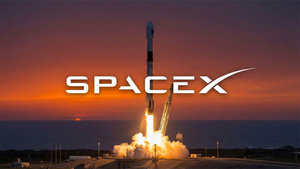
This commentary by Hubert Keller, senior managing partner with Lombard Odier Group, and Maximilian Martin, global head, philanthropy at Lombard Odier Group, an independent Swiss banking group based in Geneva, is reprinted from the World Economic Forum.
Restoring ecosystems and pursuing sustainable solutions to tackle climate change, land- and sea-use change, overexploitation and pollution are now widely seen as vital to humanity’s well-being and survival.
Philanthropy already has and will keep making major contributions but currently, less than 2% of philanthropic giving is directed towards climate change mitigation. Philanthropy is a personal, precious and scarce resource that needs to be used wisely.
From our vantage point, we see five major opportunities to help Earth action become more dynamic. Wealth managers are especially well placed to support two out of five.
Utilizing environment-specific causes
Donors are committed to causes that hold special significance to them. The environment is named in 10% of all new foundation statutes in Switzerland and outranked seven-to-one by the four leading causes: culture and leisure, education and research, social services and public health.

Estimates suggest that today, around 1 million species are facing extinction and 25% of assessed plant and animal groups are under threat. Preserving our planet’s biodiversity is an environmental issue; it also has major implications for our health, livelihoods and the places we care about.
The need for urgent environmental action is becoming hard to ignore. Thus, when crafting their strategies, non-profits seeking to mobilize capital should recognize where they can connect to the existing causes and initiatives of philanthropic foundations.
Seeking innovative sustainable solutions
Second, uncovering opportunities that can deliver high social impact faster is another way we can advance towards a sustainable future. This is why we at Lombard Odier have partnered with the GAEA (Giving to Amplify Earth Action) Awards.
This year’s laureates have, among them, outstanding societal-oriented propositions with the natural world at their heart. Advances recognized this year include decarbonizing rice production or setting new standards for economically viable fossil-free steel production.
Now they have the audience of a larger and influential group of people, accelerating and scaling up their ideas is the next step. Some of these could become investment opportunities in their own right.
Set up by the World Economic Forum, GAEA is well-placed to recognize and accelerate innovative collaborations that can lead to systems change.
Better data
Scientific evidence and data are the enablers of progress. Rapid progress towards net zero is hard to imagine without access to timely, policy-relevant information on greenhouse gas concentrations and flows.
In this and other fields, we still have work to do. For example, weather observations are acquired and exchanged in real-time and near real-time and used for high-resolution simulation on a global scale, coordinated by the World Meteorological Organization.
There is currently no integrated global system for monitoring greenhouse gases (GHG) that operates like weather prediction and climate analysis. Systematic, sustained GHG monitoring networks with standardized data exchanges need to be built, modelled on national meteorological and hydrological services and their networks.
Such systems are typically government-funded. Philanthropic foundations willing to offer seed funding can be powerful accelerators of progress.
Sustainable investing on the rise
Change happens when many people act on the vast insights out there. With a life expectancy of 79 years for men and 84 years for women, millennials, generation Z and generation Alpha will be around for some time.

As institutions focus on long-term investment success, wealth managers are uniquely positioned to mobilize the next generations. These future generations will have more resources to back their convictions from better-informed investors and philanthropists.
According to the 2024 Cerulli US HNW & UHNW Markets Report, by 2048, $124 trillion in wealth will change hands. Projections suggest that $54 trillion will first be passed on to spouses before being transferred to younger heirs and charities.
In recent years, next-generation investors have taken more interest in sustainable investing, environmental philanthropy, and blended propositions, which reconcile environmental impact with the principles of sound investment. We expect this trend to continue.
Stewarding family wealth for the long term
Wealth managers also have value to add where philanthropy ventures into finance. Whenever investment cycles are too long for venture capital investments or markets not yet existent, philanthropy, impact investment and blended finance can complement large-scale government programmes.
They ease the path from fundamental research to bringing innovations to proof-of-concept while de-risking their route to market. As the market mechanism takes over, this is a powerful way of scaling compelling products and services, backing human ingenuity with capital.
Pairing a more informed understanding of the natural world, including how to shape its carbon intensity and protect its biodiversity, with access to financial resources and instruments to allocate capital can also be an impactful tool. It can help unleash innovation, entrepreneurship and investment on an unprecedented scale.
Wealth managers are stewards of family wealth and thus uniquely placed in helping to shape wealth strategies in an individual’s lifetime and for future generations as more investment that factors in externalities become more widespread.
Managing wealth in this way can thus help bring a sustainable, livable world into view.
Read more: Gen Z investors are starting younger, embracing crypto and AI


















